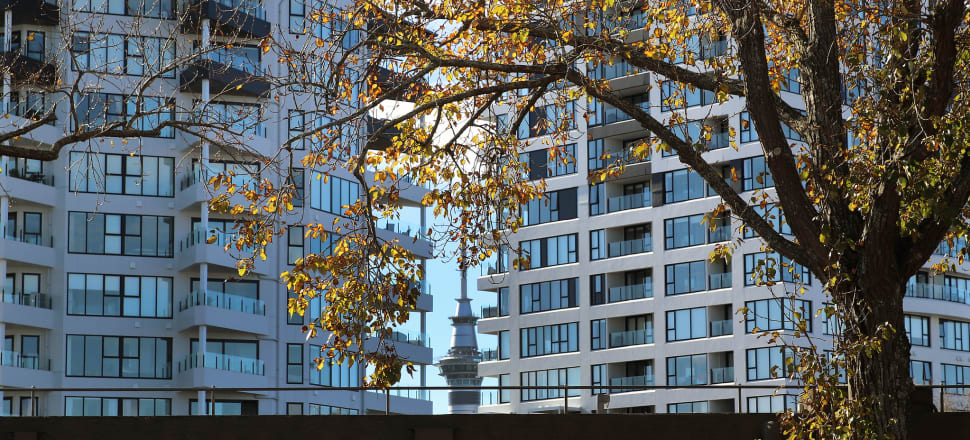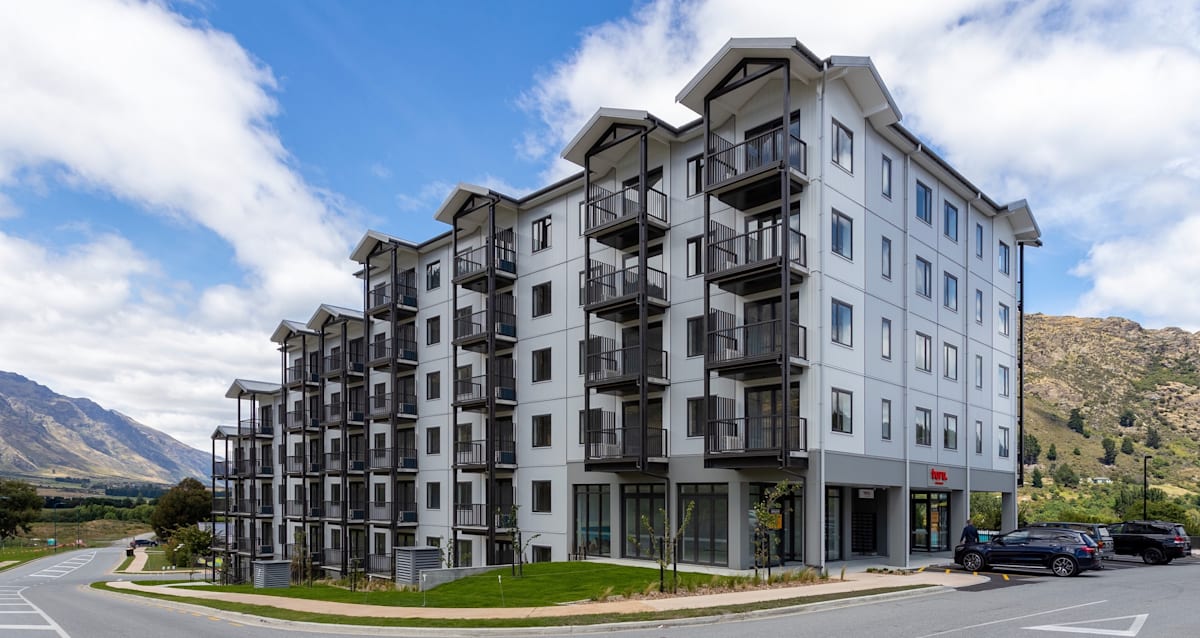
As the Government tightens rules for property investors, it’s talking up a less common type of rental development. What are ‘build-to-rent’ schemes, and how could they help our housing crisis?
In the wake of the Government’s recently announced raft of housing policy measures, Jacinda Ardern and her Cabinet were accused by critics of unfairly putting “mum and dad investors” and other landlords in the firing line.
It is a claim Ardern and other ministers have pushed back on – but with official advice floating the possibility of rising rents due to the changes, they are swiftly looking elsewhere for alternative models to fill the gap in the market.
In an interview with Newsroom last week, Housing Minister Megan Woods specifically cited build-to-rent developments as the type of housing investment the Government was keen for Kiwis to pursue.
“What opportunities does it provide for so-called mum and dad investors to invest in a different way in housing, to bring forward new supply, not have to have the hassle of being the landlord because it’s a more professionalised rental market, and more importantly, they’re not competing with their kids in the suburbs over the same stock.”
Nor is she the first housing minister in this Government to express enthusiasm with the idea: in 2019, her predecessor Phil Twyford floated the idea of backing developers to produce build-to-rent properties on Crown land, although nothing ultimately appeared to come of it.
The model, based on multi-unit developments designed to be tenanted long-term rather than sold to individual owners, has taken off in the United Kingdom and is popular elsewhere in North America and Europe, but is a more novel concept here.
‘Something a little more corporate’
David Faulkner, the director of property management consultancy Real iQ, told Newsroom his interest in build-to-rents came from their successful development in parts of Europe, such as the conversion of London’s Olympic village into housing.
Faulkner said the developments offered tenants a longer-term lease with the flexibility to move out earlier if needed, while the property managers “almost in essence become like a concierge service for tenants”.
“You’re dealing with something a little more corporate, you’re not going to worry about maintenance as much – if you’re dealing with ‘mum and dad’ landlords they might drag their feet a bit, and spend time shopping around.”
While there were benefits for tenants, aspiring property investors could also gain from an easier way to get into the real estate market without high levels of equity.
“It’s a great entry level for people who want to invest in property: they don’t have to get this ridiculous deposit level of $100,000 to $200,000 which a lot of people won’t be able to get into.”
However, Faulkner said investors into build-to-rent developments had to sacrifice some autonomy over a property in exchange for less hands-on maintenance.
“Because we have a mindset that it’s a property-owning democracy, a lot of landlords are of the opinion ‘It’s my property, I should be able to do what I want to do with it’.”

Although the build-to-rent sector is not well developed in New Zealand, there are some developments already in place.
New Ground Capital co-founder and managing director Roy Thompson told Newsroom he had decided to launch his company in 2014, based on his experiences working with large real estate investment trusts in Europe and North America.
“They just take an altogether more professional approach to the delivery of rental properties … tenants stay in their houses for a long time, they have security of tenure and they get treated well, all of which doesn’t always happen here.”
Its first development was a joint project with Ngāi Tahu and the NZ Super Fund at Hobsonville Point in 2015, with 47 of 208 homes retained by the consortium as long-term rentals and the remainder sold on the open market. It is now working on apartments in Queenstown, with a greater proportion kept back as long-term rentals.
Thompson said one of the company’s first – and ongoing – challenges was educating potential investors about the benefits of having build-to-rent developments in their portfolios.
“We work with institutional investors and we need access to large pools of capital that’s ready to commit long term … [in housing] you’ve got a very large, very deep market which is stable.”
Its tenants benefited from a long-term lease of up to seven years, with the ability to leave in the shorter term if their living conditions change
While the company had initially thought demand would skew towards younger customers, Thompson said that had not proven to be the case, with some retirees eager to sell large family homes they no longer needed and move into a stable rental.
A middle-class solution?
Of course, our politicians are always keen to note there is no silver bullet for our housing crisis, and build-to-rents are no exception.
Faulkner said the developments tended to be aimed more at the middle class and were less helpful for those at the lower end of the socio-economic spectrum.
In 2018, The Guardian reported that London’s private rental ‘communities’ were an average of 11 percent more expensive than other rentals nearby, suggesting “these high-spec products only really seem to be an answer for affluent young professionals”.
However, Thompson said he did not entirely agree with that assessment, noting New Ground was in discussions with Kāinga Ora about how to deliver more affordable housing.
“The challenge for us as a build-to-rent operator is to build these new rentals at a price or cost that allows it to count as a more affordable rental.”
Massey University economist and property specialist Graham Squires told Newsroom there were questions about whether build-to-rents simply benefited big commerce, while there were the usual “dead money” issue where renters essentially forewent money that could have gone towards a house deposit.
Squires said there were also unanswered questions about whether the build-to-rent model would remain viable in a decade’s time or longer, and what would happen if the operators left or if the housing market took a downturn.
“Once people have extracted most of their investment out of the properties, what happens to companies that might be ailing, where is the accountability down the line?”
A strong regulatory regime would be needed to ensure the quality of the developments, including the common areas which were typically a selling point.
Officials recommended against any other specific tax breaks for the build-to-rent sector, saying there was insufficient evidence build-to-rents were “intrinsically more effective in stimulating new housing supplies than alternative development options”.
There are a number of obstacles which would need to be overcome if the number of build-to-rents in New Zealand were to be ramped up.
Thompson said overseas investment restrictions and procedures had a chilling effect on investment from those who were already working on such developments in other countries.
“We absolutely have pent-up demand from large overseas investors who are very experienced in the build-to-rent space, and that demand is basically being prevented from investing in the market.”
While ministers believed investment rules already enabled money to go into build-to-rent developments, Thompson said that was only the case if investors went through “very long, conditional approval processes”, while developers of student accommodation and retirement villages received an exemption.
On the tax front, he said there was an uneven playing field between traditional ‘build-to-sell’ developers, who could claim back GST on building costs, and build-to-rent developers who could not.
That is not an argument that has found favour with the Ministry of Housing and Urban Development: in a 2019 briefing to Woods, officials said build-to-rent developers were not “unduly disadvantaged” as they did not pay GST on the sale of their property or rental income.
Officials also recommended against any other specific tax breaks for the sector, saying there was insufficient evidence build-to-rents were “intrinsically more effective in stimulating new housing supplies than alternative development options”.
“In addition, as a market rent offering, the BTR sector needs to be sustainable on a commercial basis. There is the risk that a subsidy will be poorly targeted and not deliver benefits to those most in need.”
While the briefing did note developers could make use of the Government’s Land for Housing Programme, any further handouts would seem unlikely if officials’ advice is heeded – but either way, the build-to-rent market may just be getting started in Aotearoa.